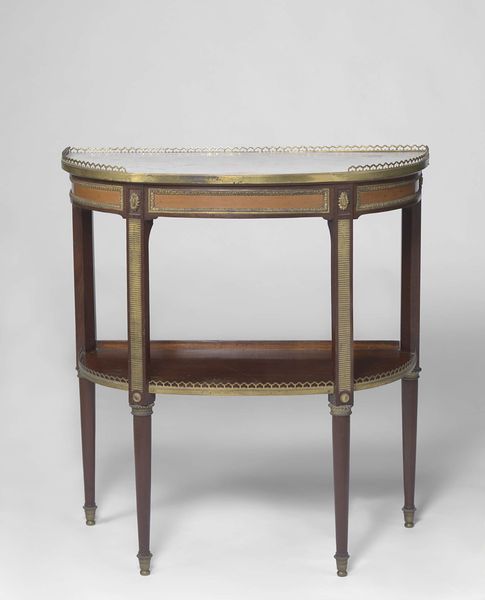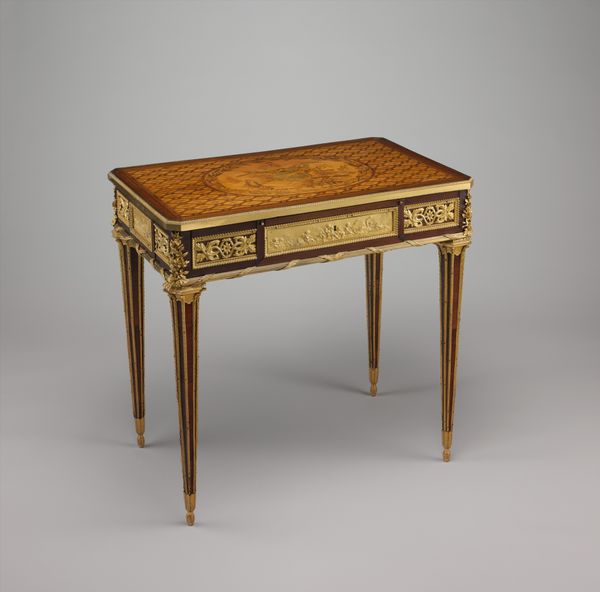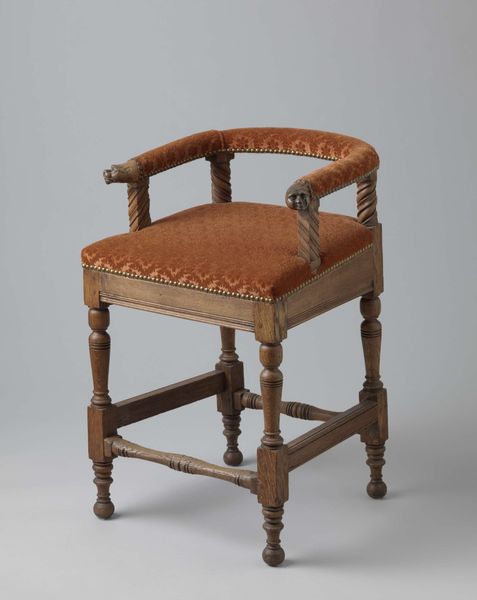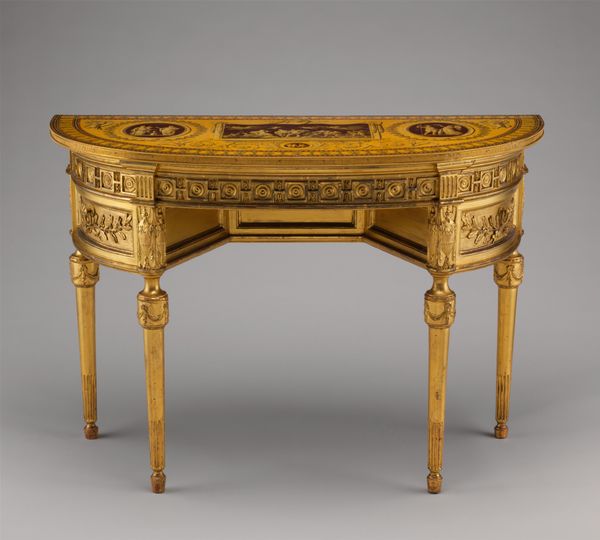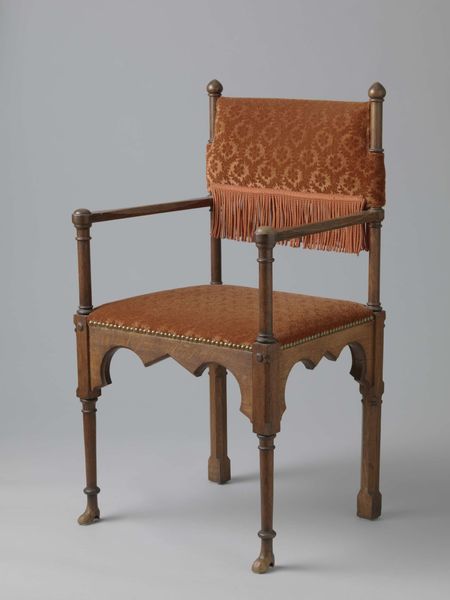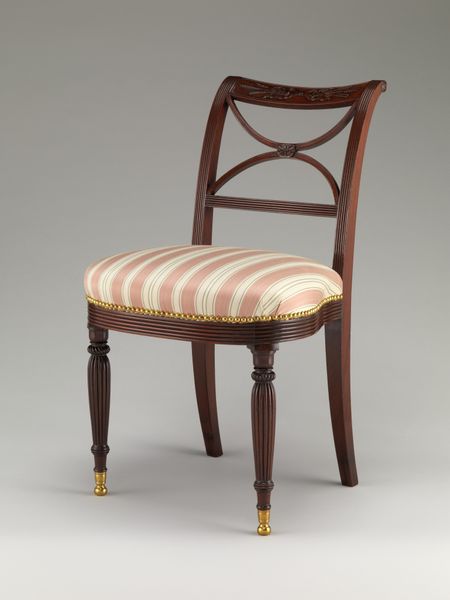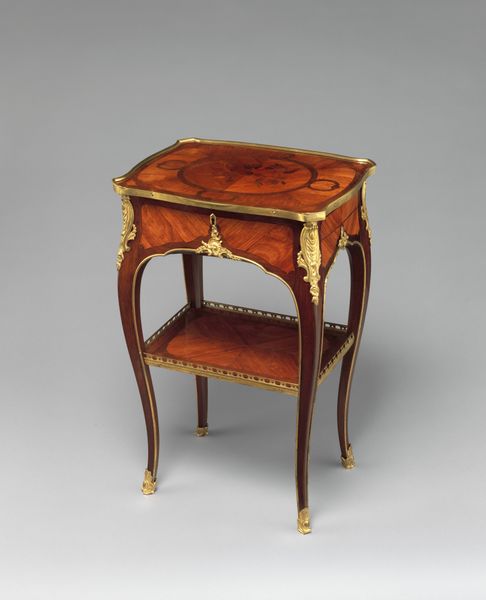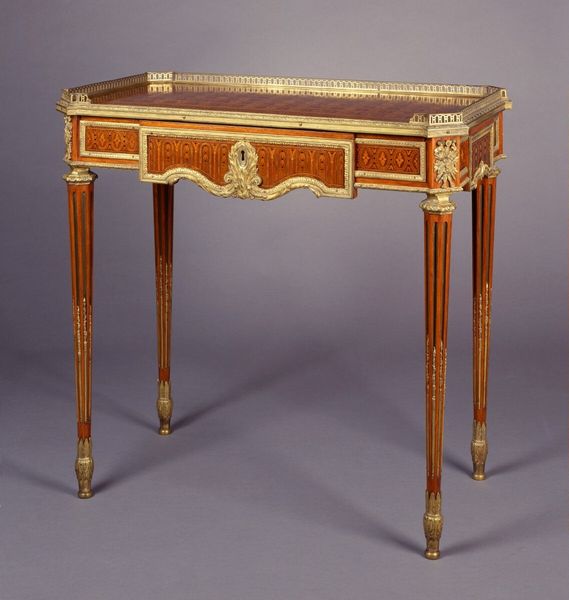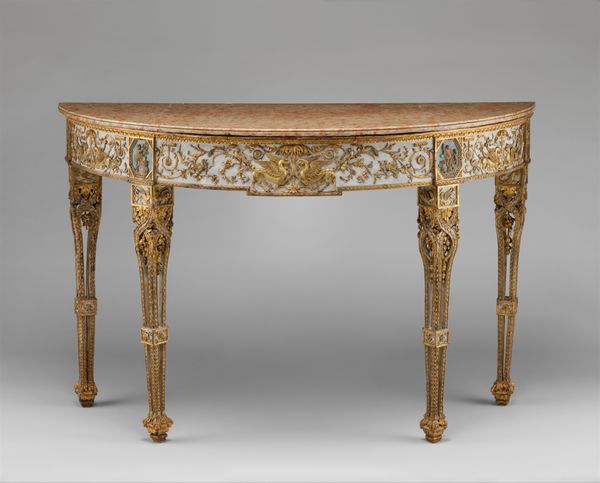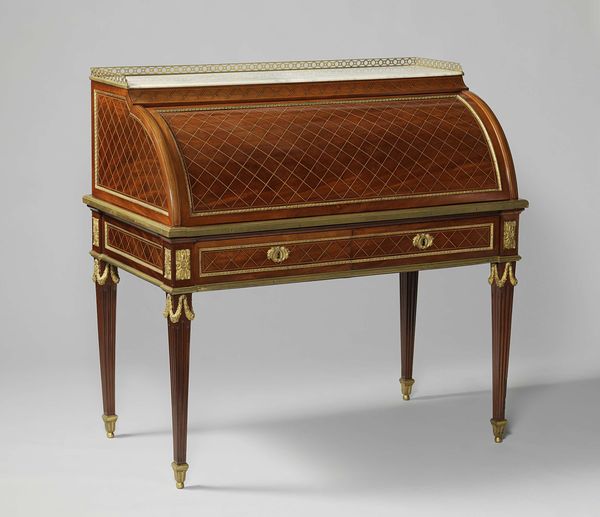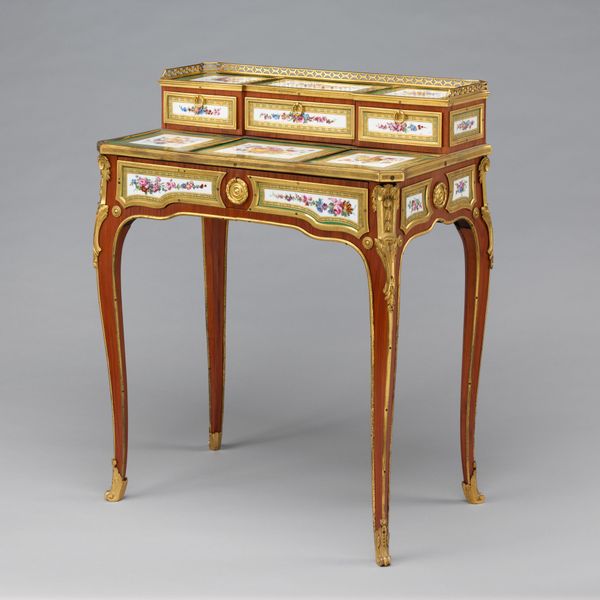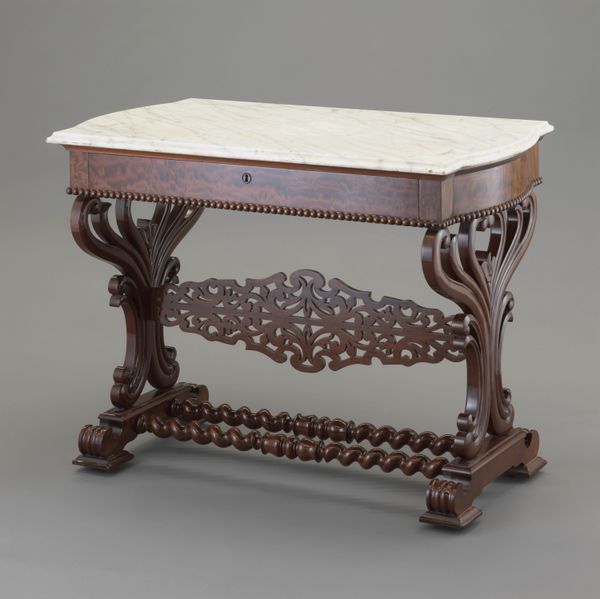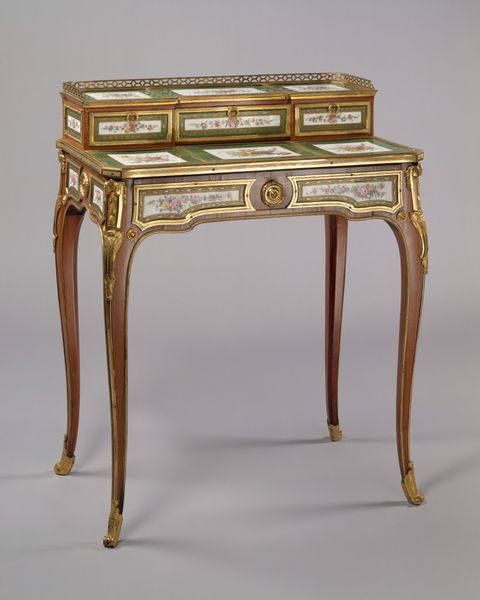
Dimensions: width 125 cm, height 41.5 cm, depth 1.5 cm, width 125 cm, height 11.5 cm, depth 1.5 cm, weight 4 kg
Copyright: Rijks Museum: Open Domain
Editor: So, this object is "Achterwand" – a table made around 1780-1790 by Claude-Charles Saunier. It’s made of wood, marble, and metal. It seems so delicate, almost like a confection. How can we understand a piece like this, practically a functional object, as art? Curator: That's an excellent starting point. Forget for a moment the "art" designation. Instead, consider the labor embedded within these materials. Look at the carving in the wood, the quarrying and polishing of the marble, the casting and detailing of the metalwork. These processes represent a considerable amount of specialized skill, social investment, and material consumption. Editor: I see what you mean. Thinking about it as labor intensive does shift my perception. But isn't it still… just a table? Curator: Not "just" a table. It’s a statement about material wealth and power. Think about the social context. Who would have commissioned and owned this? What kind of statement were they trying to make with these luxurious materials during that time period? What kinds of specialized labor was involved? Were guilds involved? Editor: Presumably someone wealthy, looking to display their refined taste… and perhaps to participate in specific social practices? Curator: Exactly. And each material decision – the marble instead of, say, slate; the specific kind of metalwork rather than simple joinery – speaks volumes about deliberate choices driven by the desires of a particular consumer. These choices are driven by market and cultural desires that impact our evaluation. How does thinking about it this way alter your initial sense of the object as purely decorative? Editor: It makes me see it as less innocent. It highlights the social and economic structures that allowed its creation, the system that it serves. Curator: Precisely. Considering the materials and the process forces us to confront those structures, rather than simply admiring its aesthetic qualities in isolation. We are evaluating an economic artifact with economic metrics.
Comments
No comments
Be the first to comment and join the conversation on the ultimate creative platform.
